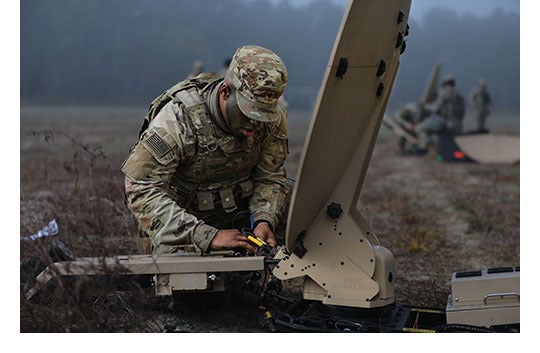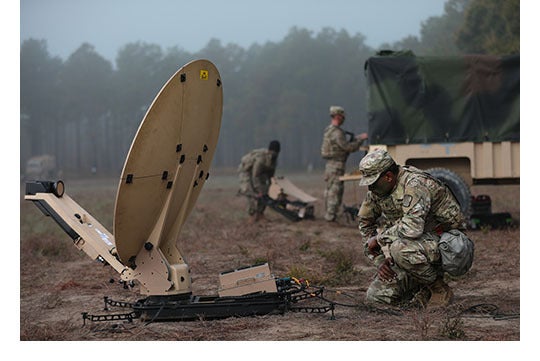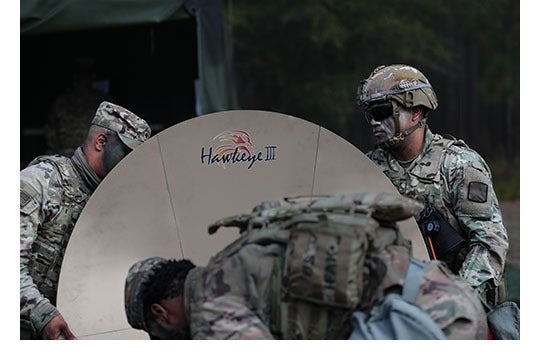The U.S. Army needs to maneuver across battlefields and deploy capabilities even faster as the consumption of Satellite Communications and the pace of engagements increase in the digital age. L3Harris Technologies’ leading-edge resilient, agile and scalable SATCOM terminals provide this vital capability to keep the Army moving fast forward.

L3Harris is delivering high-speed data SATCOM connectivity through its Hawkeye™ III Lite Very Small Aperture Terminal (VSAT) for U.S. Army units.
The system’s light, modular and easy-to-use design delivers the real-time situational awareness required for current combat. The nodes can be configured for use on commercial aircraft through their integrated Internet Protocol-based network architectures, while also supporting a variety of requirement sets with the same low latency and high data rates.
“The integration of our Hawkeye III Lite VSATs into the U.S. Army transport architecture is key to enabling uninterrupted mission command and rapidly deploying and supporting maneuver forces across the battlefield,” said Chris Aebli, L3Harris president of Tactical Communications. “These terminals deliver high-speed data communications with complete network flexibility, modular modems and frequency bands, providing the Army a multi-domain communications backbone in contested environments.”
Enhancing Expeditionary Signals

The Army began discussing expeditionary transport with industry in 2018, leading to a series of prototype operational demonstrations, exercises and assessments. The service down-selected industry proposals to three competitors in 2019 and awarded to L3Harris in 2020. As part of the partnership, the company also provides support, sustainment and both general-purpose user and maintenance-specific training.
Since the initial two-year award in 2020, L3Harris received four subsequent orders under the Army program, with the latest order for $60 million.
“The expeditionary transport conversion kicked off in earnest in 2018, when the Chief of Staff of the Army received feedback from signaleers that the equipment was outdated and no longer met the needs for increased data across the modern battlespace,” said Bill Seiss, L3Harris director of U.S. Army Tactical Communications programs. “This latest partnership continues to provide more signaleers with the highest-performing VSAT on the market.”
The high-capacity Hawkeye III Lite can reestablish connections after moving locations faster than its predecessor terminal. It is backward-compatible and integrable to legacy systems within the Army’s inventory, added Zsanette McKinney, L3Harris Account Management lead. The L3Harris VSAT is a triband-capable system that provides a value-added, auto-acquire feature and is Medium Earth Orbit-upgradable.
Committing to Multi-Domain Missions

L3Harris leans forward to proactively address concerns, such as obsolescence, by working with its supplier partners and assuring its modern manufacturing production lines can deliver high quantities quickly to meet surge requirements.
As the world leader in defense communications manufacturing, L3Harris is committed to maintaining resiliency in its supply chain obsolescence management capabilities, according to Matt Nearpass, L3Harris Product Management director. The company’s engineers are extremely proactive in their approach, often working side-by-side with suppliers to extend the life of a product line in anticipation of part scarcity.
“The Hawkeye III Lite has a broad user base across the globe, from Australia to Europe, including NATO and Five Eyes countries,” added McKinney. “We have a continued commitment to innovation and sustainment to ensure our VSATs meet the needs of our customers for as long as they require them.”

